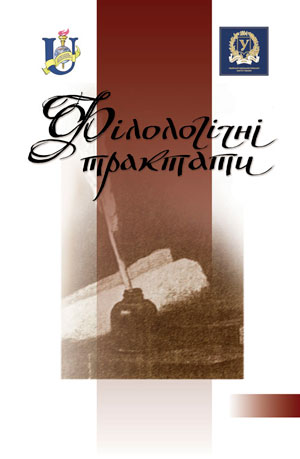I. Zhylenko. Mythological motives and archetype images of mother in the works of small prose in the inter-war period
DOI:
https://doi.org/10.21272/https://doi.org/10.21272/%20Ftrk.2018.10(1)-15Abstract
The present work studies mythological motifs and archetypes of mother in a dialogue of small prose of Ukrainian and Russian emigrant writers of the interwar era. Based on K. Jung's doctrine of archetypes, it is being shown that the archetype of the Great Mother remains unchanged for centuries, generating images and subjects in works of writers. There is a variety of mythological motifs outlined in the used works: revenge, beggary, blind maternal love, Niobea (mother-sufferer), Ata (baby substitution), Ananke (fatal meeting), Judah (traitor mother), Furia (maternal curse and revenge), masks (protective shell), stranger (not recognizing one’s own child), mankurtism (oblivion), Mnemozina (remembering), and a prodigal son. It is being emphasized that motifs change over time, lose and acquire new details, thus representing themselves in a new sense, since they are often combined and form the "core of a plot" (O. Veselovsky). The artistic paradigms of Ukrainian and Russian writers in the depiction of the main archetypes and motifs of maternal themes are typologically similar and are intertwined in many cases.
Though the maternal archetype image is ambivalent, a positive image of the mother is dominant in the works of small prose is observed. Its basis is presented by the archetype of the Great Mother, who played a leading role in the works of I. Shmelev, L. Verhovinka, I.Gavrilyuk, Teffi, V. Samchuk, V. Sofronov-Levytsky, B. Lepky. Mother-Beregina, Mère protectrice, who often forgets her own life and is ready to sacrifice everything for the sake of the happiness of her own child, is a common element for almost all of the analyzed works is the motive of sacrifice.














